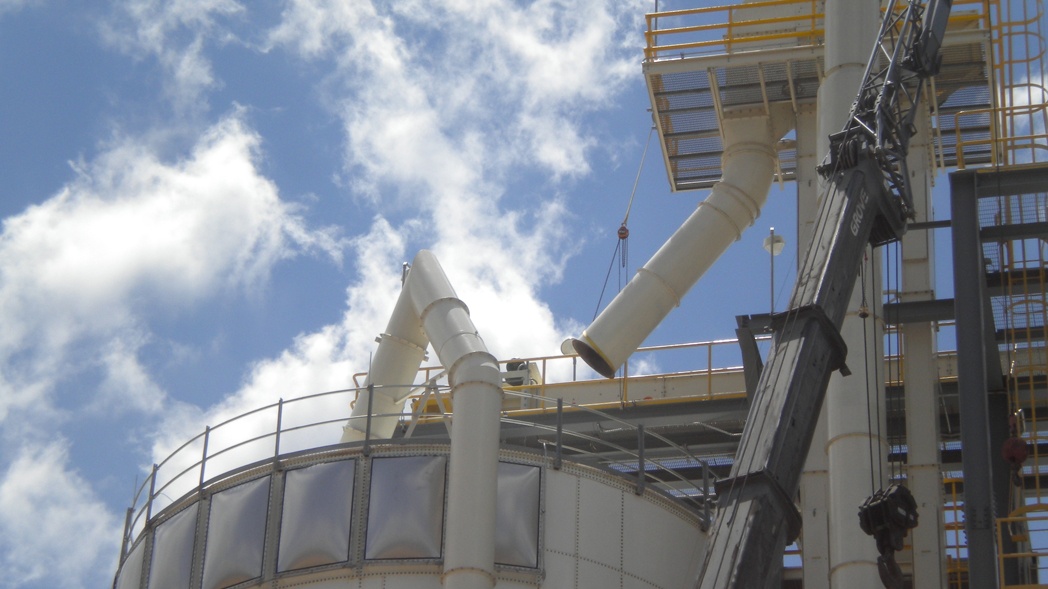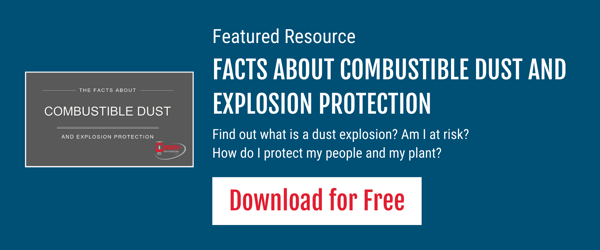Explosions are a whole different ball game compared to regular fires and will therefore require a different method of fire protection than those commonly used, such as automatic fire sprinklers.
READ MORE ABOUT THE METHODS OF PROTECTION HERE
Five conditions must exist for an explosion to occur, as opposed to the three conditions required for a fire.
Fires are slower to release energy than an explosion, and they spread by the transfer of heat energy. Explosions happen in microseconds. They're like speedy bursts caused by gases expanding, causing a dramatic spike in pressure. Picture this: a cloud of tiny dust particles is suspended in the air in a confined space (like equipment or a vessel) and meets a spark. Boom, explosion.
Deep Dive into Dust Explosions: Primary and Secondary
Dust explosions have a two-part story. First, there's the primary explosion when a bunch of dust in a confined space, like a silo or dust collector, is ignited. Then, this initial blast shakes loose more dust particles that become suspended in the air (typically from horizontal surfaces). If that dust ignites, it’s called a secondary explosion, and this one can be far more catastrophic than the first.
Surprise, Even Everyday Stuff Can Explode
Many materials that are not normally combustible in their regular form, are combustible when they are in the form of dust. Things like metal, sugar or corn that seem harmless can become explosive when made into a fine dust. These materials that seem innocent can turn into a big problem.
OSHA's Got Your Back
To figure out if your dust is explosive, Download OSHA's Combustible Dust Poster. It's a handy guide that helps you spot materials that could put your people and plant at risk.
Take Charge: Protect Yourself
Don't wait for trouble to knock on your door. Reach out to set up a Hazard Analysis to figure out what you need for Combustible Dust Protection to prevent damage and downtime at your plant.
REAR MORE ABOUT DUST EXPLOSIONS AND LEARN WHO IS AT RISK HERE
Schedule a Hazard Analysis to determine what you need for Combustible Dust Protection. SCHEDULE HERE.
The information provided is for general informational purposes only. Every fire protection system is unique, with specific inspection, testing, and maintenance requirements determined by system type, manufacturer specifications, building use, and local regulations. Consult a qualified fire protection professional or your local Authority Having Jurisdiction (AHJ) to ensure compliance with applicable standards. Century Fire Protection assumes no liability for actions taken based on this content.


